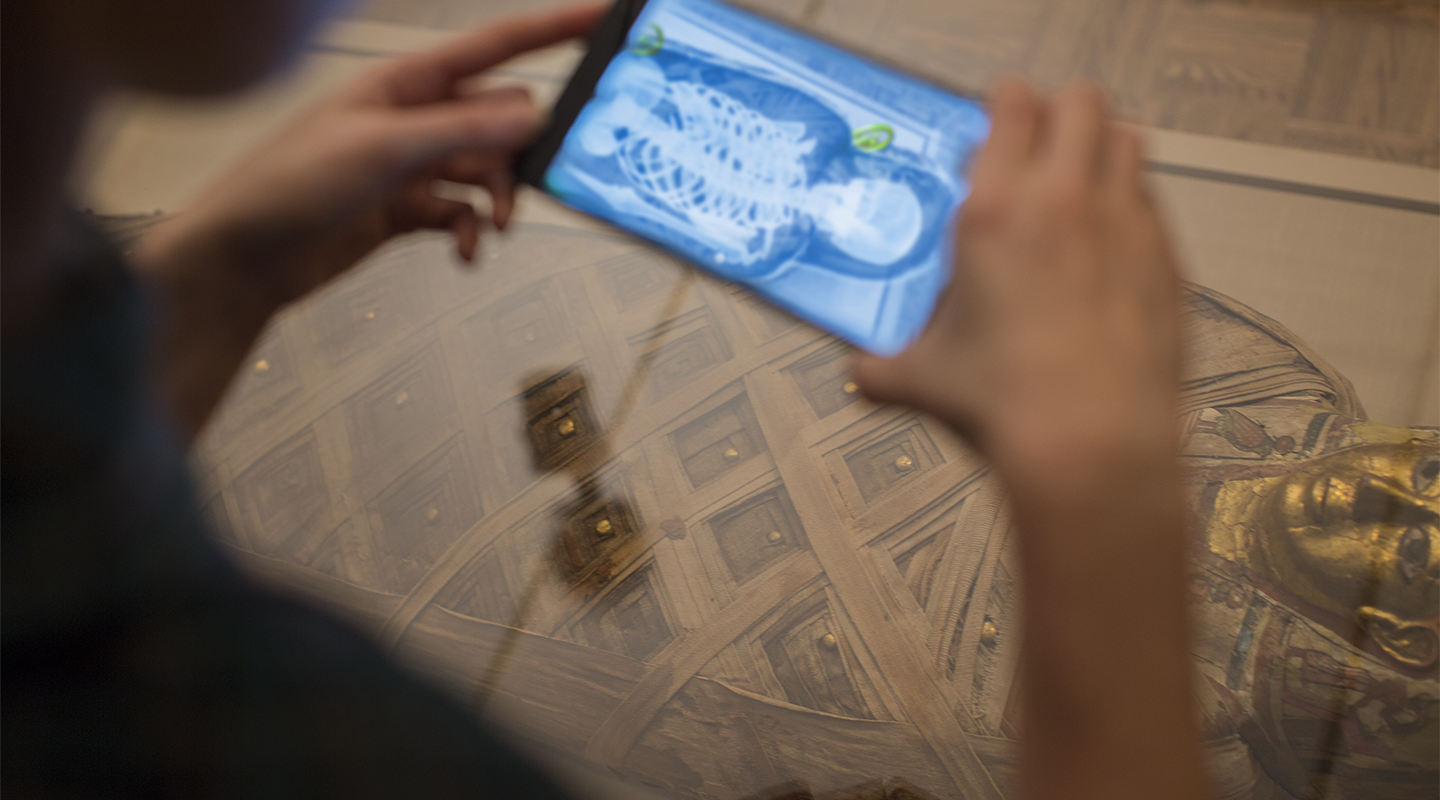Google's Project Tango Heads To The Detroit Institute Of Arts
The Detroit Institute of Arts is using Google's Project Tango for augmented reality (AR) features at some of its exhibits. Visitors will now be able to pull out their phones to examine skeletons, view restored versions of ancient tablets, and interact with Mesopotamian cylinder seals, among other things.
Tango is Google's effort to popularize AR. The platform doesn't rely on a cumbersome headset or complicated setup--all it requires is a smartphone. The only problem is that Tango-compatible phones aren't exactly common. Lenovo introduced the first device to support the platform in November 2016, and the next Tango-ready device will be the dual-purpose Asus ZenFone AR, which isn't expected to make its debut until the second quarter of 2017.
That's likely to change, though, and when it does Tango users will have plenty of AR experiences available to them. Google had 35 apps ready for the platform's launch in November--that number is likely to grow as organizations like the Detroit Institute of Arts experiment with AR. It doesn't matter that few people can enjoy the interactive exhibits today; what matters is the belief that AR could soon be as common as the phones in our pockets.
Until then, Google said the Detroit Institute of Arts would offer Lenovo's Phab 2 Pro at its front desk to visitors interested in the AR exhibits. That's a smart move for everyone involved: Tango gets more exposure to people who might never have been interested in AR otherwise, the Detroit Institute of Arts has something new to offer with its exhibits, and consumers get to glimpse at the future without spending a couple of hundred bucks on a smartphone.
The Detroit Institute of Arts won't be the only museum embracing AR. "This is just the beginning of how you’ll be able to use Tango in museums to see more, hear more, and learn more," Tango senior product manager Justin Quimby said in a blog post. "Stay tuned as we bring Tango to even more museums around the world." It turns out the company already did, kinda, when it demoed a similar app during Mobile World Congress in February 2016.
That app was called GuidiGO. It allowed people to use a tablet equipped with Project Tango at the Museu Nacional D’Art De Catalunya in Barcelona to view information about paintings and view a dotted line on the floor indicating where they should head next. The Detroit Institute of Arts teamed up with GuidiGO to create its own app, Lumin, with the features described above. (A people-finding app called Glympse was also demoed at the museum.)
Google can't force manufacturers to support Tango, but it can encourage projects like the Detroit Institute of Arts' to drum up consumer interest while the world waits to see if the AR platform will catch on. What's not to like about using AR to make a museum's exhibits just a little bit more interesting?
Get Tom's Hardware's best news and in-depth reviews, straight to your inbox.

Nathaniel Mott is a freelance news and features writer for Tom's Hardware US, covering breaking news, security, and the silliest aspects of the tech industry.
-
AnimeMania They could do something similar by putting QR Codes on the exhibits and it would be accessible to a majority of their patrons right now, without the need for expensive special equipment.Reply -
scolaner Reply19134341 said:They could do something similar by putting QR Codes on the exhibits and it would be accessible to a majority of their patrons right now, without the need for expensive special equipment.
Yeah, but this does more than that: http://www.tomshardware.com/news/lenovo-project-tango-tablet-demos,31293.html
-
bit_user Replyconsumers get to glimpse at the future without spending a couple of hundred bucks on a smartphone.
Actually $500.
Google really needs to partner up with some established & upcoming indy mobile game devs and subsidize development of some quality games for Tango.
If they want to drive mass adoption, then I think art museums are just a distraction. Sure, they cater to the more affluent, educated demographic that's more likely to include developers than average, but still... this just feels like playing around at the margins.
-
scolaner Reply19173880 said:consumers get to glimpse at the future without spending a couple of hundred bucks on a smartphone.
Actually $500.
Google really needs to partner up with some established & upcoming indy mobile game devs and subsidize development of some quality games for Tango.
If they want to drive mass adoption, then I think art museums are just a distraction. Sure, they cater to the more affluent, educated demographic that's more likely to include developers than average, but still... this just feels like playing around at the margins.
I think what you're saying is that there needs to be a killer app--or a killer application (in the physical sense of the word.) And I agree.
Although, one could make that argument that ubiquity would work just as well for pushing adoption--the idea that if you use a device like this for a whole bunch of smaller tasks, it becomes just as indispensable as if you use it for one or two big things. -
bit_user Microsoft has the right idea by going after industrial applications. For the typical consumer, it's unlikely there'll be a Tango app that justifies them buying one of the (currently) two phones which support it.Reply
The other thing Google should do is hurry up and release a Tango AR HMD, like Intel's Alloy (which might be Tango-based, for all we know).

